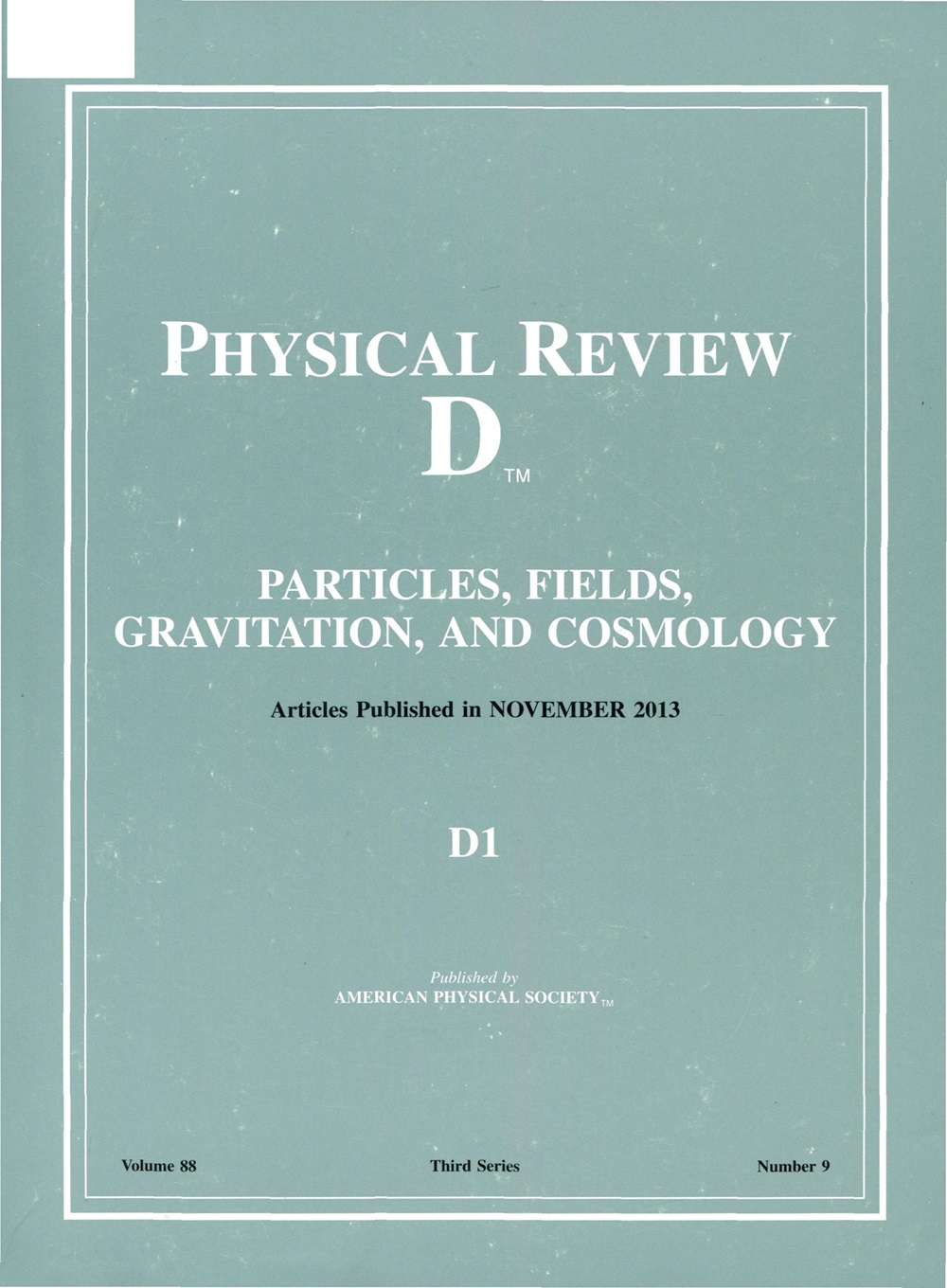IF 5
2区 物理与天体物理
Q1 Physics and Astronomy
引用次数: 0
摘要
波光学中的引力透镜是一个结合了苛性奇点、广义相对论和干涉现象的丰富领域。我们详细评估了以 Lense-Thirring 时空为模型的旋转恒星的帧拖曳所产生的波光学效应。我们证明,与之前的文献(如[C. Baraldo , ])相反,恒星的自旋会在干涉条纹和透镜光源的凹凸上留下复杂的印记。这种干涉图案原则上可以用来直接测量透镜的自旋。 美国物理学会 2025 年出版本文章由计算机程序翻译,如有差异,请以英文原文为准。
Wave optics for rotating stars
Gravitational lensing in wave optics is a rich field combining caustic singularities, general relativity and interference phenomena. We present a detailed evaluation of wave optics effects resulting from the frame-dragging of a rotating star modeled by a Lense-Thirring spacetime. We demonstrate that, contrary to what was previously stated in the literature (see e.g. [C. Baraldo , ]), the spin of the star leaves an intricate imprint on the interference fringes and the caustics of the lensed source. This interference pattern can in principle be used to directly measure the spin of the lens. Published by the American Physical Society 2025
求助全文
通过发布文献求助,成功后即可免费获取论文全文。
去求助
来源期刊

Physical Review D
物理-天文与天体物理
CiteScore
9.20
自引率
36.00%
发文量
0
审稿时长
2 months
期刊介绍:
Physical Review D (PRD) is a leading journal in elementary particle physics, field theory, gravitation, and cosmology and is one of the top-cited journals in high-energy physics.
PRD covers experimental and theoretical results in all aspects of particle physics, field theory, gravitation and cosmology, including:
Particle physics experiments,
Electroweak interactions,
Strong interactions,
Lattice field theories, lattice QCD,
Beyond the standard model physics,
Phenomenological aspects of field theory, general methods,
Gravity, cosmology, cosmic rays,
Astrophysics and astroparticle physics,
General relativity,
Formal aspects of field theory, field theory in curved space,
String theory, quantum gravity, gauge/gravity duality.
 求助内容:
求助内容: 应助结果提醒方式:
应助结果提醒方式:


